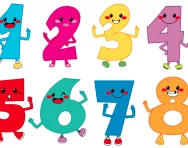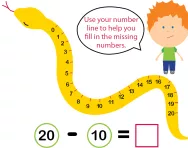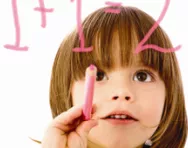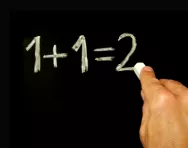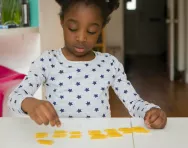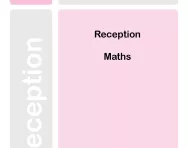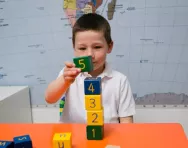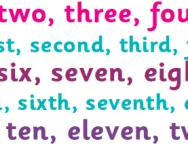Important update from TheSchoolRun
For the past 13 years, TheSchoolRun has been run by a small team of mums working from home, dedicated to providing quality educational resources to primary school parents. Unfortunately, rising supplier costs and falling revenue have made it impossible for us to continue operating, and we’ve had to make the difficult decision to close. The good news: We’ve arranged for another educational provider to take over many of our resources. These will be hosted on a new portal, where the content will be updated and expanded to support your child’s learning.
What this means for subscribers:
- Your subscription is still active, and for now, you can keep using the website as normal — just log in with your usual details to access all our articles and resources*.
- In a few months, all resources will move to the new portal. You’ll continue to have access there until your subscription ends. We’ll send you full details nearer the time.
- As a thank you for your support, we’ll also be sending you 16 primary school eBooks (worth £108.84) to download and keep.
A few changes to be aware of:
- The Learning Journey weekly email has ended, but your child’s plan will still be updated on your dashboard each Monday. Just log in to see the recommended worksheets.
- The 11+ weekly emails have now ended. We sent you all the remaining emails in the series at the end of March — please check your inbox (and spam folder) if you haven’t seen them. You can also follow the full programme here: 11+ Learning Journey.
If you have any questions, please contact us at [email protected]. Thank you for being part of our journey it’s been a privilege to support your family’s learning.
*If you need to reset your password, it will still work as usual. Please check your spam folder if the reset email doesn’t appear in your inbox.
Early maths skills: how your child learns about number
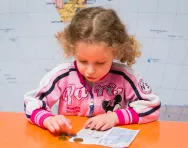
As adults, we can think of few things easier than counting to 10. But mastering what we see as very basic number skills is a tough learning journey for your child.
‘Learning about number and counting is really quite complex and involves language, working memory, visualisation and more,’ agrees Margaret Haseler, primary lead consultant for National Numeracy. So how does your child get to grips with number in the early years?
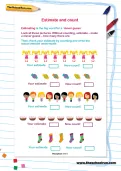
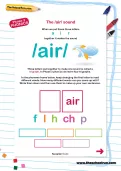
Start the Reception Learning Programme!
- Weekly maths & English worksheets direct to your inbox
- Follows the National Curriculum
- Keeps your child's learning on track
Learning about number: inborn abilities
Just as babies are born with some innate understanding of language, they also have the ability to appreciate quantity. ‘They can’t articulate it, but they can tell when a quantity in front of them has changed,’ explains Margaret. The neuropsychologist Brian Butterworth claims that this is because we are all born with a ‘number module’ in the brain which means we’re naturally attuned to quantity.
Number names
The first obvious stage of learning about number is, for most children, learning number names. ‘This usually happens from around the age of two and a half, when children start to repeat the names of numbers that they hear people saying,’ says Margaret. At this stage, though, they don’t connect the names with a quantity, or understand that they come in a fixed order.
What you can do: Sing number songs like One, two, three, four, five, once I caught a fish alive, read books that involve numbers, point out number in the environment and talk to your child about numbers.
Number sequences
The next stage is for children to learn that numbers have a fixed, unbreakable order: one, two, three, four, five and so on. ‘This is a complex skill to master: they have to know the number names and then master the sequence and get them in the right order, which involves a huge amount of working memory,’ Margaret explains. To make matters harder, they need to count as far as the twenties before they hear a repeating pattern.
What you can do: Count things out in front of your child: ‘Let’s put one, two, three pieces of apple in your bowl.’ Use everyday opportunities to practise counting, for example, counting the stairs as you go up.
One-to-one correspondence
From there, children learn about one-to-one correspondence. ‘This involves counting a group of objects by matching a number name to each one, and requires hand-eye coordination as well as number skills,’ Margaret says. Children usually do this by physically pointing at or touching each object in turn, and the skill tends to develop from around the age of three and a half. It’s common for them to make mistakes, such as missing out a number or saying a number twice.
Later, they begin to understand that they can count things that they can’t physically point to, such as the days of the week or the rooms in their house: the abstraction principle.
What you can do: Practise counting out objects like counters, buttons or toys. Encourage your child to point to each object as they say the number name. Do matching activities, such as counting out cutlery when laying the table: ‘One fork for Mummy, one for Daddy, one for you…’
Cardinal values
When children first learn to count in sequence, they don’t realise that the last number that they say stands for how many there are in the group. This is known as the cardinal number. ‘There is a stage where children will count out the objects in a group, but when you ask them how many there are, they either go back and count again, or say a completely different number,’ Margaret says. ‘They need to learn that if they have counted to seven, that means there are seven objects in the set.'
They also begin to learn that it doesn’t matter in which order they count the group in; the number stays the same, whether they start from the left, right, top or bottom. This is called the order irrelevance principle.
What you can do: Provide objects for your child to count, like plastic dinosaurs or beads to thread onto a string. Encourage them to match numbers: for example, you could draw a picture of a ladybird with three spots on one side, and ask them to draw the same number on the other side.
Subitising
Alongside these more concrete number skills, children are also developing the ability to subitise: to look at a small group of objects, randomly arranged, and tell how many are there without counting them out. ‘Children are born with this ability, and by the age of five they can usually subitise a group of three to five objects,’ Margaret says. ‘Interestingly, as adults, the maximum we can subitise is usually four to five.’
What you can do: Encourage children to estimate how many objects are in a group. Use different representations of number, such as dice patterns, to make estimating easier.
Visualisation
One of the trickiest parts of learning to count is understanding that numbers can stand for different things: for example, ‘I am five,’ ‘We catch the Number Five bus to town,’ and, ‘There are five cakes on the plate.’
In addition, there is nothing about the digit 5 that physically represents five, so children will learn other ways to visualise the number – such as picturing five spots on a dice, or five fingers on their hand.
What you can do: Talk to children about the different uses of numbers. Notice and discuss numbers in the environment, for example, ‘Look, there are four birds on the fence,’ or, ‘Can you see the number four on that door?’ Play games and talk about the numbers on the dice: children who play board games with their family have a better understanding of number before school age.
Forwards, backwards, fewer, more
By the end of Reception, most children have mastered all the above stages, and are also learning about concepts like counting backwards, counting in sequence starting from a number other than one, and the ideas of fewer than, more than, higher than and lower than. ‘This is quite a complex stage as it relies on a knowledge of the language of maths, and parents often overlook this and focus all their attention on just counting,’ Margaret explains.
What you can do: Take advantage of everyday opportunities to use the language of maths. ‘There are five bananas in the bowl; are there enough for everyone in the family?’ ‘We saw more ducks on the pond today than we did yesterday,’ ‘Let’s share these raisins between us.’
Best early numbers and counting tools: Smarties, Lego and number lines
Reinforce early counting skills with physical objects your child can touch, move and count. Pasta shapes, Lego bricks, cups... anything will work, though we find items that can be eaten after a counting session go down particularly well with kids (and parents)...
You can also use number lines to help your child visualise and work with numbers. Download a selection of free number lines and number ladders from TheSchoolRun, or download and decorate your own.


best early numbers and counting tools: number songs
A classic kids' television character, the Count from Sesame Street was obsessed with numbers. Watch the Count's videos and play his number games on the Sesame Street site for effective, timeless educational programming that's perfect for Reception-age children.

